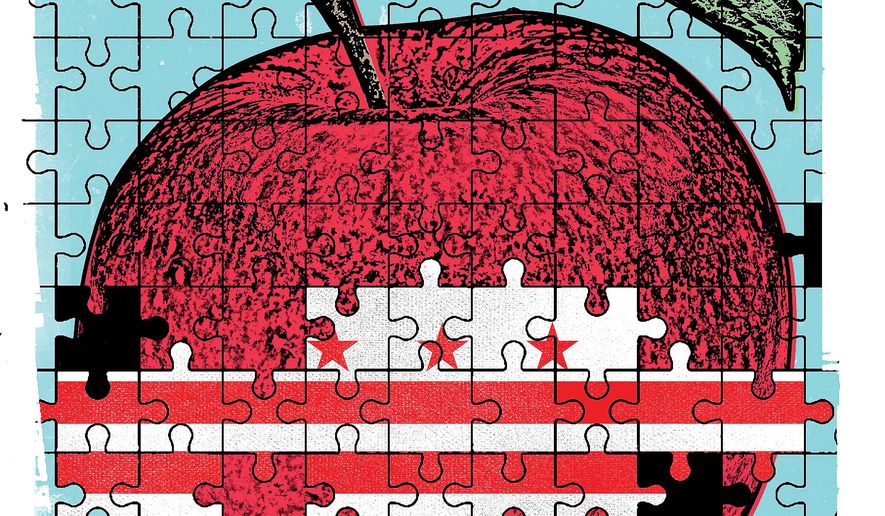OPINION:
This week is National School Choice Week, an umbrella for a vast number of different organizations to come together to educate lawmakers and the public about school choice. Challenges to employment from technology and globalization are ever more evident, making the search for solutions to substandard public education, especially in urban America, increasingly important.
The new administration, Congress, states and localities would do well to study the progress of public education reform in the nation’s capital. Some 46 percent of District of Columbia public school children are educated at charter schools. Publicly funded and operated independently of the traditional public school system, these schools of choice have transformed the educational landscape in the District and increased the quality options available to families, especially the most economically disadvantaged.
From the first two small campuses that opened 21 years ago, to representing nearly half the D.C. public education offering today, charters have combined the freedom to innovate in their schools’ curricula and culture with accountability — high standards ensure their continued right to operate. In fact, the share of students enrolled in charters underestimates their popularity. Almost 21,000 names were on waitlists to attend them in the most recent data for school year 2016-17. Quite simply, many more parents and guardians would like their children to attend charters than there are spaces available.
Reformers should note that this change occurred in an environment in which public education in the District had almost collapsed. With sky-high dropout rates and abysmal academics, a new law enabling charters to open and holding them responsible for improved student performance, extended school choice from the few to the many. Previously, choice was limited to those families that could afford to relocate outside the District, had the means to pay for private school, or could access parochial programs.
The results can be seen by many measures. D.C. public charter school students outperform their peers on standardized tests — a difference that is the most pronounced in our most underserved neighborhoods east of the Anacostia River. In these communities, two-and-a-half times the number of students at charters meets these career and college-readiness standards than their peers.
Charters also have been able to offer additional enriched learning opportunities thanks to the flexibility they enjoy. This allows them to focus on instruction that fosters lifelong learning — a necessity in the world and economy today. This success is apparent in other metrics.
District public charter schools are ahead of the curve regarding their students’ on-time — within four years — high-school graduation rate, which is higher than the D.C. average. This ensures that a higher share of their students is accepted to college than the D.C. average, opening the door to college degrees and careers denied previous generations.
These results have been achieved with public charter school campuses opening, by choice, in areas where social and economic needs are high and, as a sector, educating a greater percentage of students from disadvantaged families than the traditional system.
This model of urban education reform deserves to be considered in other jurisdictions where high-quality public education is needed most. Beyond bringing benefits to their students, charters also have been a catalyst for improvements in the traditional system, with a succession of school reforming chancellors appointed by District mayors who have presided over increases in standardized test scores and high-school graduation.
In place of dysfunctional, decaying and dangerous urban public school offerings that have little or no chance of breaking the cycle of poverty and lowered expectations, school choice for everyone regardless of income can be the game-changer that so many children need.
The federal government has recognized many charter educational programs in the District for precisely this strength and continues to support D.C. charters, with matching funds for the Opportunity Scholarship Program and D.C. Public Schools. All public schools in the District also receive foundation money in response to the vibrant changes ushered in by reform.
Nationwide, charters have nearly tripled the numbers of students they educate in the past 11 years, according to the National Alliance for Public Charter Schools. And charters have been embraced by urban areas keen to build quality public education where it has been long neglected. These include New Orleans, where the charter share is 92 percent, and Detroit and Flint, Mich., where charter enrollment is 53 percent.
The next secretary of education’s in-tray should include efforts to pass this reform’s many benefits to more children — in traditional and chartered public schools. The world won’t wait on us to get it right.
• Ramona Edelin is executive director of D.C. Association of Chartered Public Schools.




Please read our comment policy before commenting.